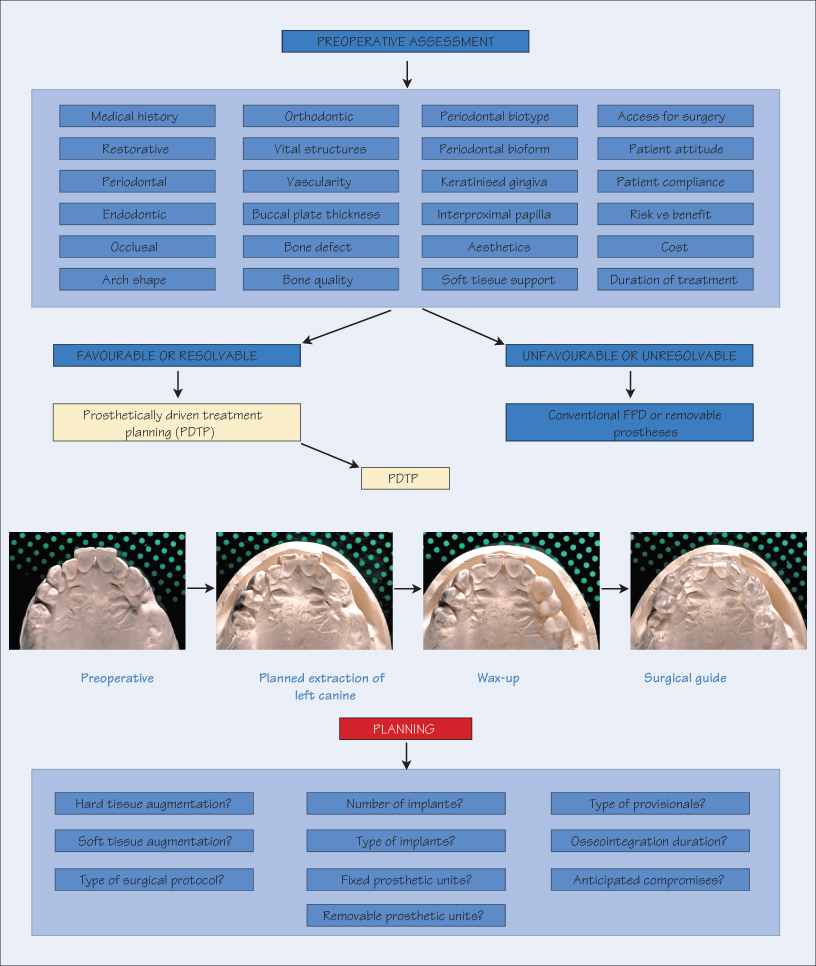50
Implants: Treatment Planning

A patient considering dental implants should initially be assessed using MAP (medical, anatomy, prognosis) as described in Chapter 2. After this cursory evaluation, comprehensive diagnostic tests are essential (discussed in the Diagnostics section) before formulating a treatment plan. The current objective of implant therapy is restoring both function and aesthetics of missing teeth, and the key to achieving this goal is meticulous diagnosis and treatment planning.
Preoperative Assessment
A detailed medical and dental history is followed by diagnostic tests, including radiographs, CBCT scans, photographs, diagnostic wax-ups and fabrication of surgical guides. If necessary, specialist advice is sought from the periodontist, endodontist, orthodontist, oral and maxillofacial surgeon, radiologist and the dental technician. The assessment should consider:
- Medical history;
- Existing dental status – periodontal, endodontic, and restorative status of existing teeth;
- Occlusion – parafunctional activity, occlusal stability (avoiding lateral forces on implant-supported prostheses), and sufficient occlusal clearance for prosthetic units;
- Arch shape – narrow, square, oval, crowding, spacing or posterior cross-bite may require preoperative orthodontic treatment;
- Proximity of vital structures – sinuses, neurovascular bundles (e.g. inferior dental nerve, mental and incisal foramen) or adjacent tooth roots;
- Reduced vascularity – due to previous periapical infections;
- Buccal plate thickness or its absence due to fistulas or fenestrations;
- Extent of bone defect – following tooth extraction, prevailing or previous periodontal disease, previous surgical trauma;
- Bone quality – classified as types I to IV; type I is highly dense cortical bone (e.g. in the mandible), and type IV is least dense cancellous bone (e.g. in the posterior maxilla). The ridge defect can either be vertical or horizontal, or a combination. For totally edentulous patients, ridge absorption often results in a transformation/>
Stay updated, free dental videos. Join our Telegram channel

VIDEdental - Online dental courses


